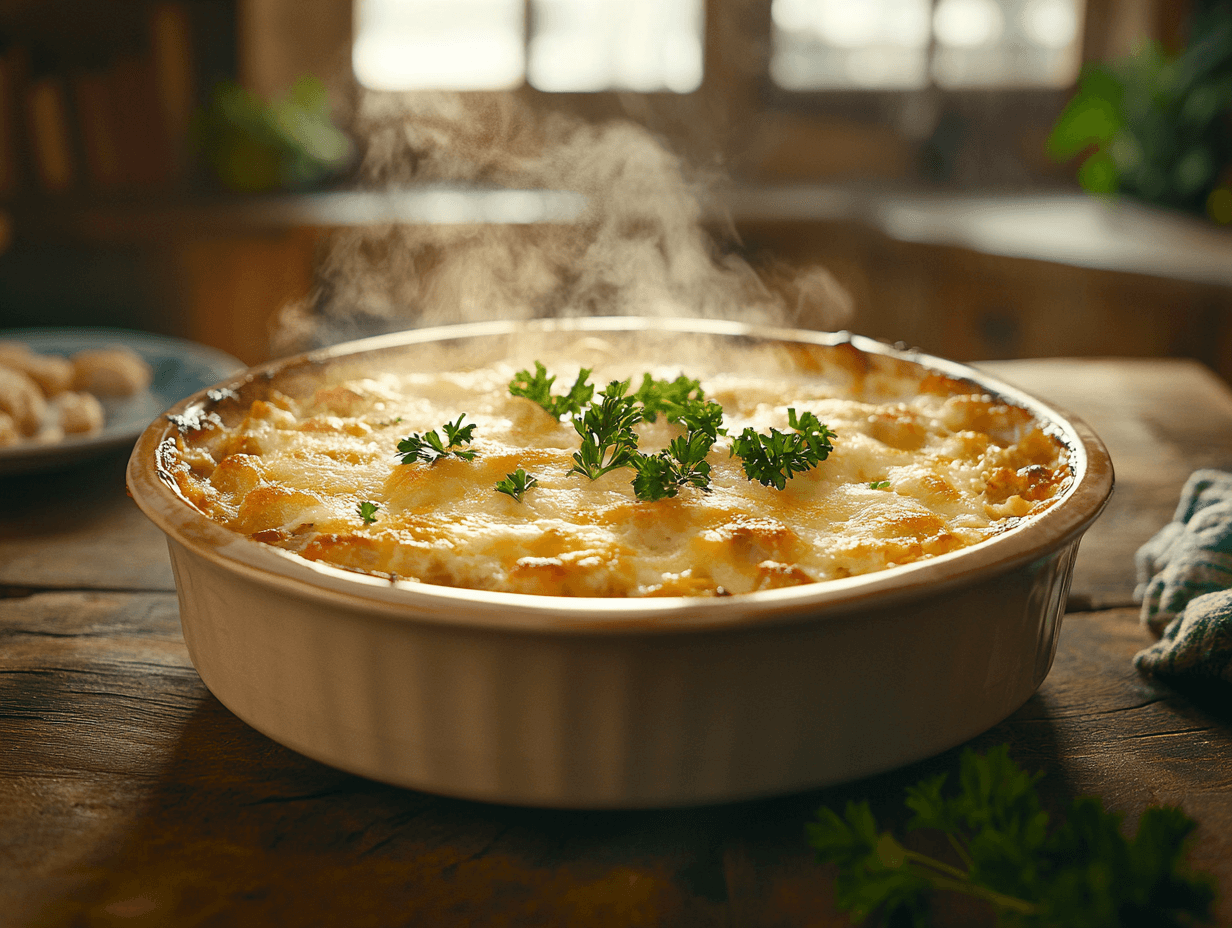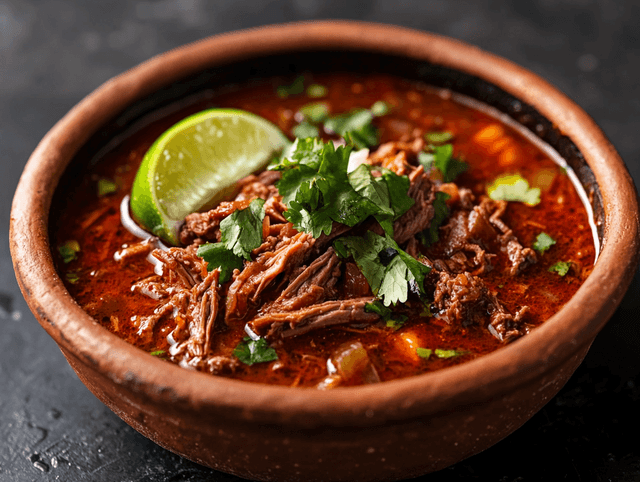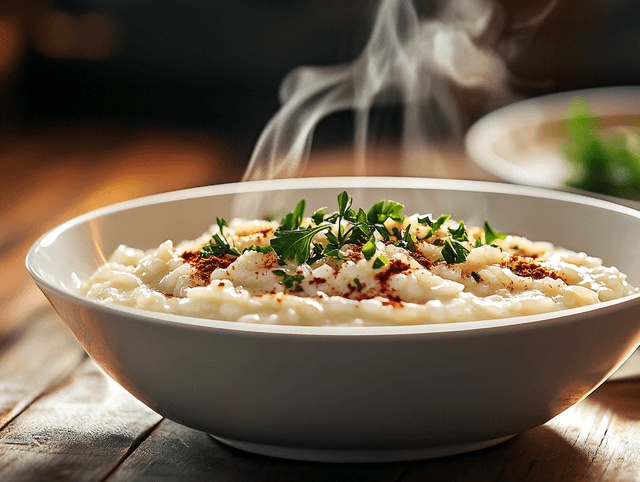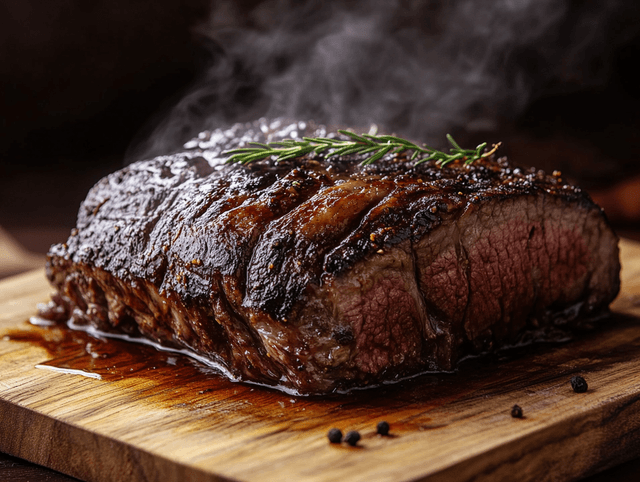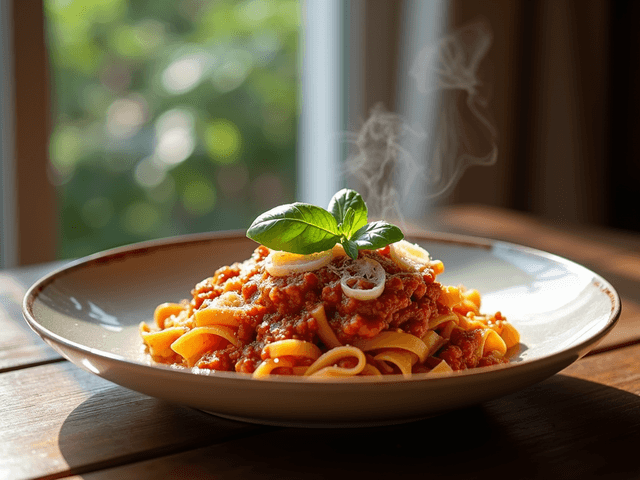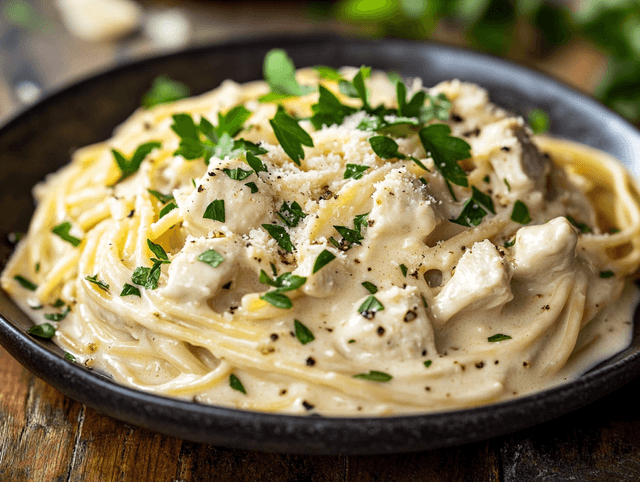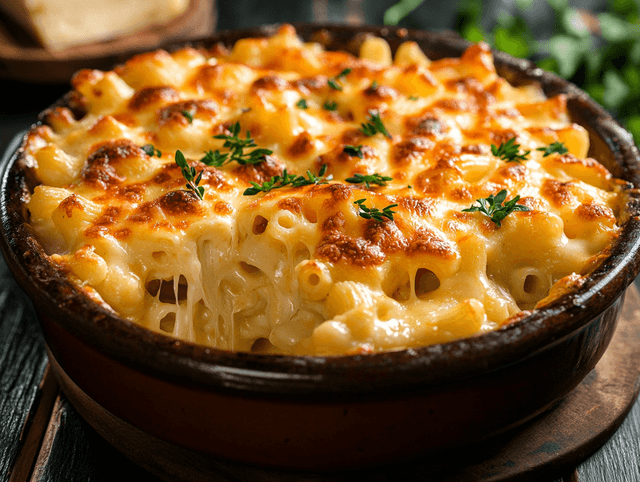Different Types of Tuna for Your Casserole
Tuna is a versatile ingredient that can be found in different forms to prepare a delicious casserole. Here are the main options:
Fresh Tuna
Fresh tuna is rich in quality proteins and unsaturated fatty acids, offering an intense flavor and firm texture ideal for casseroles. Its benefits include:
- Fresh tuna provides an excellent source of essential minerals, especially potassium and phosphorus, which are fundamental for bone and muscle health.
- B and D vitamins are maintained in their purest and most bioavailable state, maximizing their nutritional benefits.
- With approximately 100 calories per 100 grams, it's a healthy option for maintaining a balanced diet.
Canned Tuna
There are two main varieties of canned tuna:
In Water
- This type of tuna contains only 100 calories per can and less than 1 gram of fat, making it an excellent option for low-calorie recipes.
- Its preparation is perfect for creating light and healthy casseroles while maintaining tuna's characteristic flavor.
- Ideal for people following a calorie-controlled diet without sacrificing necessary protein intake.
In Oil
- Contains approximately 25 grams of protein per can and omega-3 fatty acids beneficial for cardiovascular health.
- The oil enhances tuna's natural flavors, creating a richer and more satisfying culinary experience.
- The juicy and smooth texture makes casseroles creamier and better in consistency.
Specific Types of Tuna
Yellowfin Tuna
- Known for its firm meat and robust flavor, similar to red meat but milder and more delicate.
- Its consistent texture makes it perfect for casseroles as it maintains its shape during cooking.
White Tuna
- Offers a mild and delicate flavor that perfectly complements sauces and seasonings without overpowering the dish.
- Its firm and compact texture holds up well during the cooking process, maintaining its integrity in the casserole.
Oil-packed tuna is the most recommended option for preparing casseroles, as it provides better flavor, creamier texture, and helps keep the dish juicier. Additionally, the oils help flavors blend better during cooking.

The Secret to Perfect Cooking Point for Moist Tuna
Perfect tuna cooking requires attention to detail and specific techniques to maintain its natural juiciness and enhance its characteristic flavor. Success lies in proper preparation and precise control of time and temperature.
Prior Marination
A marinade can help maintain moisture during cooking. It is recommended to use:
- Olive oil
- Lemon juice
- Aromatic herbs
- Minced garlic
Essential Techniques
- Pat the tuna dry with paper towels before cooking to achieve better browning.
- Let it rest for a few minutes after cooking to allow the juices to redistribute.
- Keep the interior slightly pink, similar to how you would cook a good cut of meat.
Proper Time and Temperature
The tuna should be cooked over medium-high heat for a brief time to prevent it from drying out. The ideal method is to sear it on both sides while allowing the interior to maintain its natural juiciness. The recommended time is 2-3 minutes per side for medium-thickness fillets.
Additional Tips for Maintaining Juiciness
- It's better to leave the tuna slightly undercooked, as it will continue cooking for a few minutes after removing it from the heat.
- If using a griddle or pan, ensure the surface is well-heated before placing the fish.
- Apply light pressure with the spatula during cooking to achieve uniform searing.
Optimal Cooking Point:
The interior should remain slightly pink while the exterior is golden brown. It's better to err on the side of undercooking than overcooking, as overcooked tuna will become dry and lose its juicy texture.

Tips for Achieving the Perfect Casserole Texture
The perfect texture of a tuna casserole requires attention to several fundamental aspects:
Pasta Preparation
- Cook the pasta al dente, approximately 2 minutes less than the package instructions, as it will continue cooking in the oven.
- Rinse the pasta with cold water after cooking to stop the cooking process and prevent sticking.
- Reserve some of the cooking water to adjust consistency if needed.
Moisture Control
- Drain the tuna thoroughly before incorporating it to avoid excess liquid.
- Add the correct amount of liquids: neither too dry nor too wet.
- If the casserole is too dry, add a bit of hot broth or milk to restore moisture.
Assembly Technique
- Distribute ingredients evenly in layers for even cooking.
- Ensure the sauce covers all ingredients to maintain moisture.
- Don't compress the ingredients too much when placing them in the baking dish.
Cooking
- Bake covered with aluminum foil during the first half of cooking.
- Remove the foil in the final minutes to achieve perfect browning.
- Let rest for 5-10 minutes before serving to allow flavors to settle.

Ingredients
Tuna casserole is a comforting dish that combines proteins and carbohydrates in a delicious baked preparation. For 4 servings you'll need:
- Canned tuna: 2 cans (170g each) - Provides the main protein and characteristic flavor of the dish.
- Egg noodles: 225g - Form the substantial base of the dish and absorb the flavors.
- Cream of mushroom: 1 can - Provides creaminess and acts as a binder.
- Cheddar cheese: 1 1/2 cups grated - Creates a golden and gratinated topping.
- Milk: 2/3 cup - Helps create a creamy sauce.
- Butter: 3 tablespoons - Adds richness and helps sauté the vegetables.
- Onion: 1 small, diced - Adds flavor and aroma as the dish's base.
- Celery: 1 stalk, chopped - Adds crunchy texture and fresh flavor.
- Peas: 2/3 cup - Provide color and natural sweetness.
- Breadcrumbs: 2/3 cup - Creates a crispy topping when baked.
- Olive oil: 1 1/2 tablespoons - For marinating the tuna.
- Lemon juice: 2 teaspoons - For marinating the tuna.
- Thyme: 3/4 teaspoon - Fresh aromatic herb for marinating.
- Minced garlic: 1 clove - For marinating the tuna.
- Garlic powder: 3/4 teaspoon - Provides aromatic flavor.
- Salt: 3/4 teaspoon - Enhances all the flavors of the dish.
- Black pepper: 1/4 teaspoon - Adds a spicy touch and depth.
- Fresh parsley: 1 1/2 tablespoons chopped - Adds freshness and color when serving.

How to Make Tuna Casserole Step by Step
The preparation of a perfect tuna casserole requires attention to detail and the correct order of ingredients. This step-by-step process will guarantee you a juicy and flavorful casserole.
Step 1: Marinating the Tuna
- In a bowl, mix 1 1/2 tablespoons olive oil, 2 teaspoons lemon juice, 3/4 teaspoon thyme, and 1 minced garlic clove to create a marinade that will enhance the tuna's flavor.
- Drain and flake the 2 cans of tuna, incorporate the marinade and let rest while preparing the other ingredients, this will allow the tuna to absorb all the flavors.
Step 2: Initial Preparation
- Preheat the oven to 375°F (190°C) while gathering all ingredients, this will ensure an even temperature throughout the baking process.
- Finely chop 1 small onion and 1 celery stalk, maintaining uniform size for even cooking.
Step 3: Cooking the Pasta
- Boil salted water and cook 225g of nest-type egg noodles according to package instructions, keeping them al dente as they will continue cooking in the oven.
- Drain the noodles and rinse with cold water to stop the cooking process, this will prevent them from sticking while you prepare the other ingredients.
- Reserve 2/3 cup of cooking water in case you need to adjust the final consistency.
Step 4: Preparing the Base
- Melt 3 tablespoons of butter in a large skillet over medium heat, adding the chopped onion and celery until translucent.
- Add 3/4 teaspoon of garlic powder and sauté for one more minute to release the aromas.
- Add the can of cream of mushroom soup and 2/3 cup of milk, gently mixing until you achieve a homogeneous sauce.
Step 5: Integrating Ingredients
- Add the marinated tuna to the sauce, maintaining some chunks for better texture.
- Incorporate 2/3 cup of peas and mix gently to maintain the tuna's integrity.
- Season with 3/4 teaspoon of salt and 1/4 teaspoon of black pepper, adjusting to taste.
Step 6: Assembling the Casserole
- Combine the cooked noodles with the tuna mixture, ensuring all ingredients are well distributed.
- Transfer the mixture to a greased baking dish, leveling the surface with a spatula.
- Sprinkle 1 1/2 cups of grated cheddar cheese evenly over the surface.
Step 7: Gratin and Finishing
- Bake at 375°F (190°C) for 15-20 minutes until hot and bubbly.
- Increase temperature to maximum power (480°F/250°C) or broil function for the last 5 minutes to gratinate.
- Cover the cheese with 2/3 cup of breadcrumbs to create a crispy crust.
- Watch carefully during gratinating until the surface is golden brown.
- Let rest for 5-10 minutes before serving and garnish with 1 1/2 tablespoons of chopped parsley.
For best results, serve the casserole while hot but not boiling. The resting time allows the flavors to settle and the texture to become perfect for enjoying. Remember to serve immediately after gratinating to maintain the crispy texture and cheese elasticity.

How to Achieve a Perfect Gratin
To achieve a perfect gratin, several fundamental technical aspects must be considered:
Temperature and Time
- The oven should be preheated to 400°F (200°C) for 10 minutes before gratinating.
- Use maximum power (480°F/250°C) or broil function for 5 minutes for the final gratinating.
- Place the rack in the upper part of the oven so the heat reaches the cheese better.
Gratinating Technique
- Gratinating is a finishing technique, not a cooking method, so ingredients should already be cooked.
- Use large baking dishes for homogeneous gratins or individual molds for better presentation.
- Always use a gratin rack to elevate the dish and achieve more intense heat on the surface.
Cheese Selection and Application
- Use cheeses ideal for gratinating such as mozzarella, emmental, Gruyère, or cheddar.
- The cheese thickness should be approximately 1/8 inch (3mm) for uniform melting.
- Grate the cheese manually if you want to cover the entire surface uniformly.
Serving and Presentation
- Serve immediately after gratinating while hot.
- Don't let it rest too long to maintain the crispy texture and cheese elasticity.
- If preparation in advance is needed, leave the gratinating as the final step just before serving.

Perfect Side Dishes for Tuna Casserole
The right side dishes can elevate both the flavor and presentation of a tuna casserole. Here are the best options:
Vegetable Sides
- Sautéed bell peppers in olive oil, adding color and complementary flavor.
- Grilled or roasted vegetables like zucchini and onion, which enhance the fish flavor.
- Cheese-gratinated cauliflower, adding texture and creaminess to the dish.
Potato Options
- Baked or fried potatoes, providing a crispy and versatile element.
- Mashed potatoes with parmesan cheese, ideal for balancing the casserole's texture.
- Sliced baked potatoes, which perfectly complement the dish.
Fresh Accompaniments
- Fresh salad with varied vegetables and light dressing.
- Avocado and tomato salad, adding creaminess and freshness.
- Mixed lettuce with citrus vinaigrette, helping balance the flavors.
Rice Options
- White rice with peas, a classic that absorbs the casserole's flavors.
- Spiced basmati rice, adding an aromatic touch to the dish.
- Vegetable rice with mushrooms, complementing the tuna flavor.

How to Store and Reheat Tuna Casserole
Proper storage and reheating of tuna casserole is essential to maintain its flavor and texture. Here are the best techniques:
Storage Methods
- Refrigeration: store in an airtight container at the back of the refrigerator at a temperature between 32°F and 39°F (0°C and 4°C) for a maximum of 4 days, ensuring the container is well sealed.
- Freezing: store in a well-sealed airtight bag or container at 0°F (-18°C) for up to 3 months, labeling with the freezing date.
- Avoid leaving at room temperature for more than 2 hours to prevent bacterial growth, especially on hot days.
Reheating Techniques
In the Oven (recommended method)
- Preheat the oven to 350-355°F (175-180°C) and ensure the rack is in the middle position.
- Place the casserole in a pre-greased oven-safe dish to prevent sticking.
- Add a little liquid (broth or milk) to maintain moisture and improve final texture.
- Cover with aluminum foil to prevent drying out and maintain uniform heat.
- Heat for 10-15 minutes or until completely hot, stirring halfway through.
On the Stovetop
- Use medium-low heat and a non-stick pan for even heating.
- Add a splash of oil or liquid to prevent sticking and maintain creaminess.
- Stir gently and frequently to distribute heat evenly.
- Heat until completely hot, checking the temperature in the center.
Important Tips
- Never reheat the same portion more than once to avoid loss of flavor and texture.
- Serve immediately after reheating to maintain optimal temperature and consistency.
- If it contains fish, verify that it reaches a uniform temperature of at least 165°F (74°C) in the center.
- For best results, only reheat the portion you plan to consume and keep the rest refrigerated.

Frequently Asked Questions (FAQs)
Q: Why does my tuna casserole turn out dry?
A: The casserole can become dry for three main reasons: excessive time in the oven, lack of liquids in the preparation, or using tuna that's too well-drained. To prevent this, it's important to maintain an adequate proportion of liquids and not exceed the recommended cooking time.
Q: What type of tuna is best to use?
A: Oil-packed tuna is the best option for casseroles as it provides more flavor and helps maintain the dish's moisture. White or albacore tuna is particularly recommended for its mild flavor and firm texture that holds up well during cooking.
Q: Can it be prepared in advance?
A: Yes, the casserole can be prepared a day ahead and stored covered in the refrigerator. When baking, it will just need a few additional minutes of cooking time to reach the proper temperature.
Q: How can I prevent the cheese gratin from becoming too hard?
A: To achieve a perfect gratin, it's important to use the right cheese (such as cheddar or mozzarella), grate the cheese fresh, and only gratinate during the last 5 minutes of cooking at high temperature.
